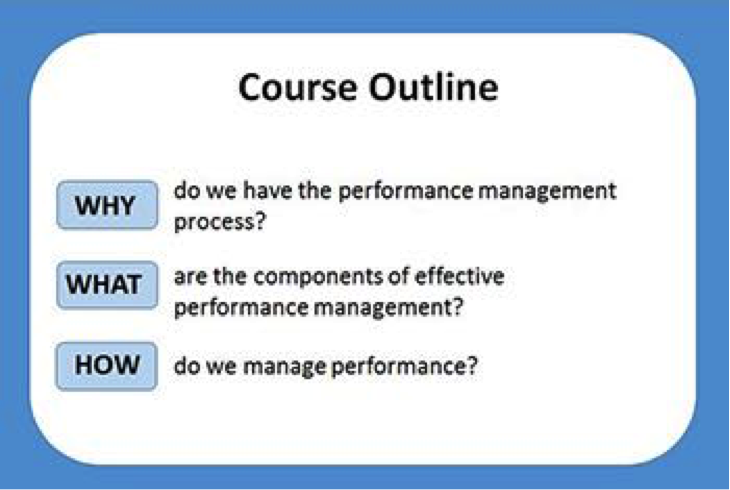Audio podcasts and videos are great tools for sharing knowledge and ideas, and for supplementing instructional content. But there are challenges for listeners and viewers. Videos and podcasts go by so fast. Users can easily miss the key points or forget them by the time the podcast or video is finished.
How can you make podcasts and videos “sticky”? Here are five ways to give the user a fighting chance to capture and recall key points:
- Provide an advance organizer or show notes
- Tell a story
- Make it personal
- Break it up
- Make it a conversation
Give the listener/viewer an advance organizer
An advance organizer helps audience consuming your video or podcast organize new information in a meaningful, coherent way. Try to show relationships. Offer content as comparison, classification, generalization, or cause-effect. For a video, the content can include advance organizers like the one Jane Bozarth provided as an example in one of her columns (Figure 1). Figure 1 does a lot more for the viewer than bullets can do: it helps the learner structure information by providing relationships.

Figure 1: Example of a course advance organizer
Podcast advance organization
An audio podcast can provide structure for information in the way the narrator uses words. One thing to keep in mind is that in order to avoid overloading the learner, podcasts and videos are best kept short and limited to only a single objective or learning point. How short? Like other forms of microlearning, the guideline is “no longer than necessary.”
Show notes
Show notes can be in the form of a text document linked to a podcast or video. Show notes are often an extended outline. Online podcast transcription services can make development of show notes easier. If you have podcasts that you recorded months or years ago but did not provide or link show notes to them, transcription services make it possible to re-purpose those podcasts very quickly by adding show notes for users. Be sure to include time information for each item in the show notes—how many minutes and seconds from the beginning does the narrator address this item? This will help the user quickly locate the content, using the “scrubber” in the media player.
Tell a story
Learning Solutions has published many articles dealing with stories and storytelling as part of eLearning. Stories provide sticky context for slippery ideas.
In one of her Nuts and Bolts columns, Jane Bozarth advises, “Learn the basic arc of a story: setup (who are the characters? Why are they here?); conflict (what is the problem? A harassment complaint or a sick child in need of a doctor?); crisis (some turning point in which a decision is made or action taken); and resolution (the outcome).”
If your eLearning will be delivered on mobile devices, pick a storytelling format that works for mobile.
Make it personal—give a reason to listen/view all the way to the end
Make a connection to your learners’ imaginations by identifying key personas. If you have a big audience, build your content and design around three or four personas. Prune the visual content in videos and the verbal descriptions in audio podcasts so that what is left draws in the learners corresponding to those personas.
Be sure that your introduction is clear about what the learner will gain by viewing the entire video or listening to the entire podcast. Learners deserve to know what the “payoff” is and its value to them. Think through the value chain with a careful analysis that links the content of the video or the podcast to the learners’ personal and business priorities.
Break it up
It is especially important to consider and manage the learners’ cognitive load. Break the content up into short segments and use production values—including music and structure—to maintain the learners’ attention.
Make it a conversation
The human factor is as important as the actual content. Make your video or podcast a conversation; this means have more than one speaker or on-screen actor. Use professional talent who can capture, engage, and maintain interest.
Want more?
Jonathan Halls will present Session 601, “Professional Media Techniques to Make Digital Instructional Content Stick” during the Making Learning Stick Online Conference, February 19-20, 2020.
In this session, Jonathan will expand on the ideas in this article, and more. He will show professional media techniques from TV, radio, and newspapers that can be applied to your instructional media content so that the learning sticks. You will learn approaches from recording better voice overs to making video more engaging. Jonathan will also cover ways to make sure your instructional content leads to learning, make video look more professional, create audio and podcasts that sound polished, and ensure digital text is read and not ignored.
You can register for the event, or get an eLearning Guild Online Conference Subscription to access this and all online conferences for the next year, plus much more. Making Learning Stick includes eight sessions, delivered by experts, that will help you improve every element of your eLearning.


